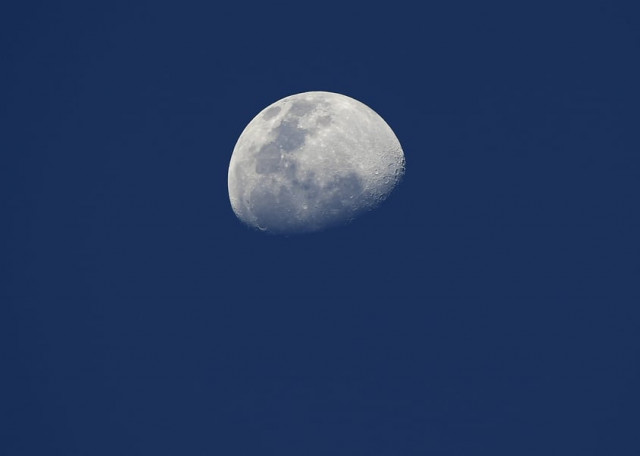A facelift for the Moon every 81,000 years
More than 100 tonnes of dust and sand-sized particles rain down on the planet every day

The moon is from Cordoba, Argentina, on October 11, 2016. PHOTO: AFP
NASA to reveal 'surprising' activity on Jupiter's moon
This churn, affecting the top two centimetres (nearly an inch) of mostly loose moon dust, happens 100 times more frequently than previously thought, scientists reported.
The study also estimates that asteroids and comets crashing into Earth's only natural satellite create, on average, 180 new craters at least 10 metres (33 feet) in diameter every year.
The findings, published in Nature, come from "before and after" pictures taken by NASA's Lunar Reconnaissance Orbiter spacecraft, which has been mapping the Moon since 2009.
By comparing images of the same area at regular intervals, a team of scientists led by Emerson Speyerer from Arizona State University in Tempe were able to tally the number of new craters and extrapolate to the entire surface of the Moon.
New evidence of water plumes on Jupiter's moon Europa
"We detected 222 new impact craters and found 33 percent more craters with a diameter of at least 10 metres than predicted" by earlier models, the researchers concluded.
The scientists also found thousands of subtler disturbances on the surface, which they described as "scars" from smaller, secondary impacts that -- over thousands of years -- churned up the top layer of the Moon without creating craters.
Earth is also constantly pelted by asteroids and meteors, but is protected by a thick atmosphere.
More than 100 tonnes of dust and sand-sized particles rain down on the planet every day.
Even space rocks up to 25 metres across (80 feet) will likely explode and disintegrate in the upper layers of our atmosphere, causing little or no damage, according to NASA.
Hurricane Nicole delays next US cargo mission to space
The Moon's ultra-thin atmosphere only contains about 100 molecules of gases and elements per cubic centimetre (0.6 cubic inch).
Earth's atmosphere at sea level, by contrast, is packed with about 100 billion billion molecules per cubic centimetre.



















COMMENTS
Comments are moderated and generally will be posted if they are on-topic and not abusive.
For more information, please see our Comments FAQ